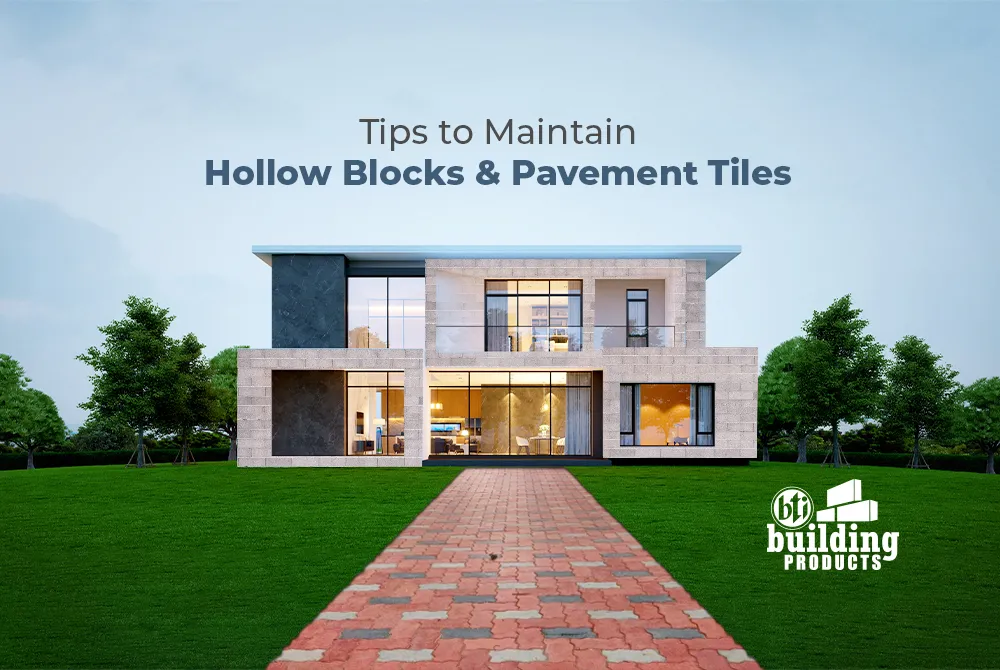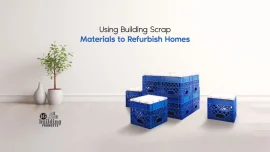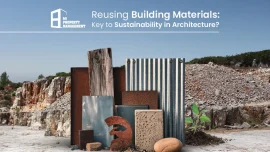
Maintenance and Care Tips for Hollow Blocks and Pavement Tiles: Extending Their Lifespan and Beauty
The long-lasting nature and visual appeal of hollow blocks and pavement tiles make them attractive alternatives for construction and design. To guarantee lifespan and preserve their aesthetic looks, they need to be properly maintained, just like any other building material. Take a look at these essential tips for maintaining and caring for hollow blocks and pavement tiles to maximize their lifespan and beauty.
Regular cleaning
Regularly sweep or hose down the surface of hollow blocks and pavement tiles to get rid of organic matter, dirt, and debris. Mild detergent and water-based solutions can be used to remove stubborn stains. But make sure not to use any harsh chemicals that may damage the surface.
Weed and ant control
Weeds can grow between the pavement tiles or hollow blocks from windblown seeds. They can be removed using herbicides consisting of biodegradable products. This will help avoid damage to adjacent vegetative lands. Besides, sealers can be used to stabilize joint sand and prevent ants from entering.
Sealing the surface
Sand-filled joints on pavement tiles receive dirt from ongoing traffic, which helps hold the sand in place. However, installations exposed to winds or runoff may lose some sand that can be restocked with dry sand. If this issue persists, sealers can be applied over the entire surface and allowed to soak and cure in the joints. This acts as a protective layer which helps in avoiding water penetration, stains and colour fading.
Repair cracks
Minor cracks can occur on the surface of the hollow blocks or pavement tiles due to climate change, ongoing traffic or heavy impact. These cracks should be repaired promptly with proper sealants to prevent water infiltration and avoid more extensive damage.
Drainage facility
Water pooling can wash off the joint sands making the blocks and tiles loose and vulnerable. It also leads to the premature degradation of the materials. Proper drainage facilities should be ensured so that water logging does not happen where the blocks and tiles are installed.
Protect from harsh weather
Hollow blocks and pavement tiles should be protected from harsh weather conditions like excessive snowfall or extreme heat. Though they offer outstanding resistance against these types of weather conditions, still proper care should be taken to ensure longevity. Snow should be removed to prevent slippiness of the surface. Extreme heat can cause cracks which can be cured with sealants and joint sands.
Settlement and utility repairs
Settlement in pavements can be caused by inadequate soil or base compaction, water, excessive thick bedding sand, or washed-out sand. In uneven areas, pavers can be removed, adjusted, and reinstated without wasted materials or unsightly patches. If the base or soil is stable, additional base material should be added. Concrete pavers can be removed to access underground utilities and reinstated after repairs.
Removing stains
Oil stains on pavement tiles from cars can be difficult to remove; hence, it is crucial to treat them immediately. Wipe excess oil off, apply liquid detergent, soak for a few minutes, and wash with hot water. For stubborn stains on hollow block walls, multiple treatments may be necessary. Special cleaners are recommended for effective removal. In some cases, replacing stained blocks or pavement may be simpler.
These procedures can be followed to maintain concrete hollow blocks and pavement tiles; therefore, enhancing their lifespan and beauty. Regular cleaning, proactive repairs, and protective measures contribute to the longevity of these materials. These ensure they remain a durable and attractive choice for building all kinds of projects.




